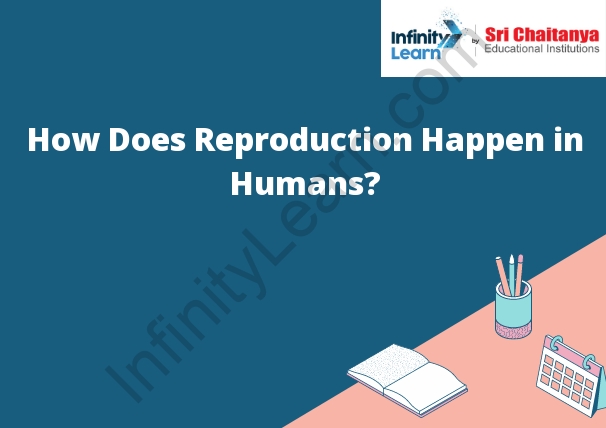Table of Contents
Modes of Reproduction; Events of Reproduction in Humans
There are three modes of reproduction: asexual, sexual, and hermaphroditic.
In asexual reproduction, one parent organism produces genetically identical offspring without the need for fertilization. This can be done through fragmentation (splitting the organism into two or more pieces), budding (a new organism forms from an outgrowth of the parent), or parthenogenesis (a virgin female produces offspring from unfertilized eggs).
In sexual reproduction, two parents combine their genetic information to produce offspring with a unique genetic makeup. This can be done through fertilization, in which the male’s sperm combines with the female’s egg, or through hybridization, in which the genetic material of two different species is combined to produce a hybrid offspring.
In hermaphroditic reproduction, an organism has both male and female reproductive organs and can produce offspring either through self-fertilization or cross-fertilization with another hermaphroditic organism.
| S.NO | CONTENT |
| 1 | INTRODUCTION |
| 2 | ASEXUAL REPRODUCTION |
| 3 | SEXUAL REPRODUCTION |
| 4 | REPRODUCTION IN HUMAN BEINGS |
| 5 | HUMAN REPRODUCTIVE SYSTEM |
| 6 | GAMETOGENESIS |
| 7 | INSEMINATION |
| 8 | FERTILIZATION |
| 9 | GESTATION AND PARTURATION |

Asexual Reproduction:
Asexual reproduction is a type of reproduction in which an organism creates a genetically similar copy of itself without the need for a partner. This can be done through a process called mitosis, in which the cell’s DNA is duplicated and then distributed to two new daughter cells. Asexual reproduction can also occur through budding, in which a new organism splits off from an existing one.
Sexual Reproduction:
Sexual reproduction is a process where two organisms fuse their genetic material to create a new organism. The process begins when two organisms, a male and a female, produce gametes. Gametes are reproductive cells that contain half of the genetic material of the parents. The male produces sperm, and the female produces eggs.
The sperm and the egg fuse together to form a zygote. The zygote contains all of the genetic material of the parents. The zygote divides and grows into a new organism.
Reproduction In Human Beings:
In human beings, the process of reproduction is a result of the combination of two cells, the egg and the sperm. The egg is released from the ovary, and the sperm is released from the penis. The egg and sperm meet in the fallopian tube, and the sperm fertilizes the egg. The fertilized egg then implants in the uterus, and the process of development begins.
Human Reproductive System:
The human reproductive system is a series of organs and tissues that work together to produce offspring. The system includes the male and female reproductive organs and the hormones that control them.
The male reproductive system includes the penis, the scrotum, the testes, and the prostate gland. The penis is the organ used for sexual intercourse. The scrotum is a pouch-like structure that hangs below the penis and contains the testes. The testes produce sperm and the male sex hormone testosterone. The prostate gland produces a fluid that helps to lubricate the urethra during ejaculation.
The female reproductive system includes the ovaries, the uterus, the cervix, and the vagina. The ovaries produce eggs and the female sex hormone estrogen. The uterus is a hollow organ that houses the developing fetus. The cervix is the lower part of the uterus that opens into the vagina. The vagina is a muscular tube that extends from the uterus to the outside of the body.
Gametogenesis:
Gametogenesis is the process by which gametes are produced. In males, it involves the production of sperm from precursor cells called spermatogonia. In females, it involves the production of eggs from precursor cells called oogonia.
Insemination:
Insemination is the introduction of sperm into the female reproductive tract. It may be performed through the vagina, cervix, or uterus. The sperm may be introduced manually, or through the use of a medical device such as a syringe, intrauterine insemination (IUI) catheter, or cervical cap.
Fertilization:
Fertilizers are not necessary, but if you wish to use them, use a balanced fertilizer such as 10-10-10.
Watering: Water your plants when the top 2-3 inches of soil are dry.
Water your plants when the top 2-3 inches of soil are dry.
Pruning: Prune your plants to maintain their shape and size.
Implantation:
The implantation process begins with the release of a mature egg from one of the ovaries. The egg is then swept into the fallopian tubes, where it is fertilized by a sperm cell.
If the egg is fertilized, it will begin to divide and grow as it travels down the fallopian tube. Once it reaches the uterus, the embryo will implant itself into the uterine wall.
Implantation is a process that can take several days to complete.
Gestation:
The gestation of a human baby is about nine months.
Parturition:
The Process of Giving Birth
Parturition is the process of giving birth. It is usually divided into three stages: the first stage is the latent stage, the second stage is the active stage, and the third stage is the resolution stage.









